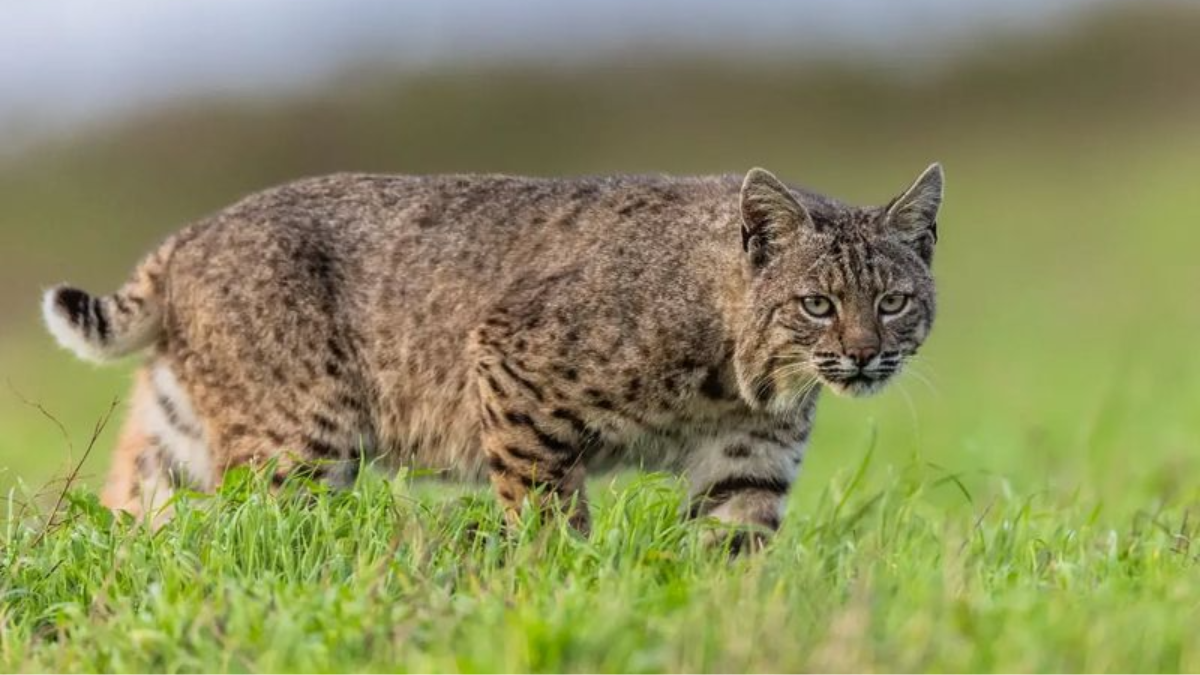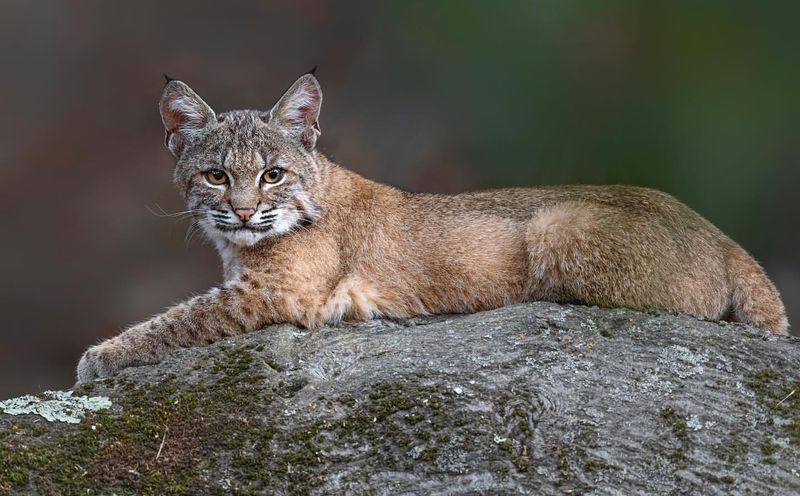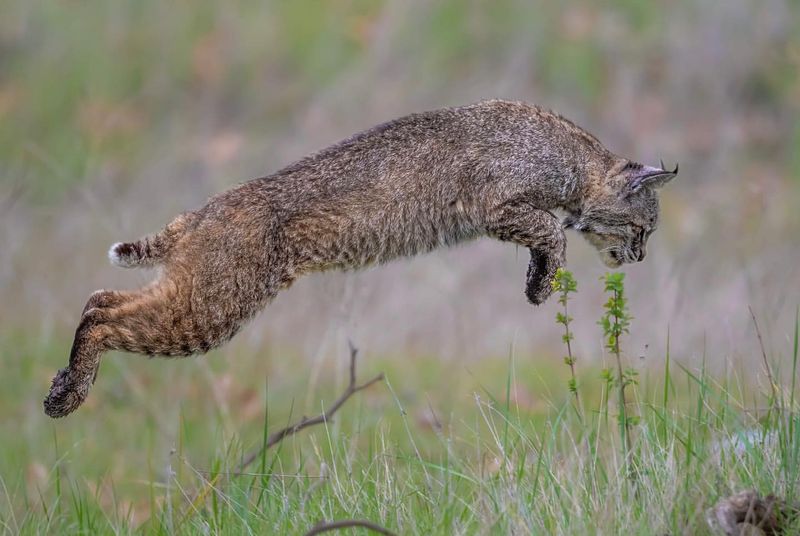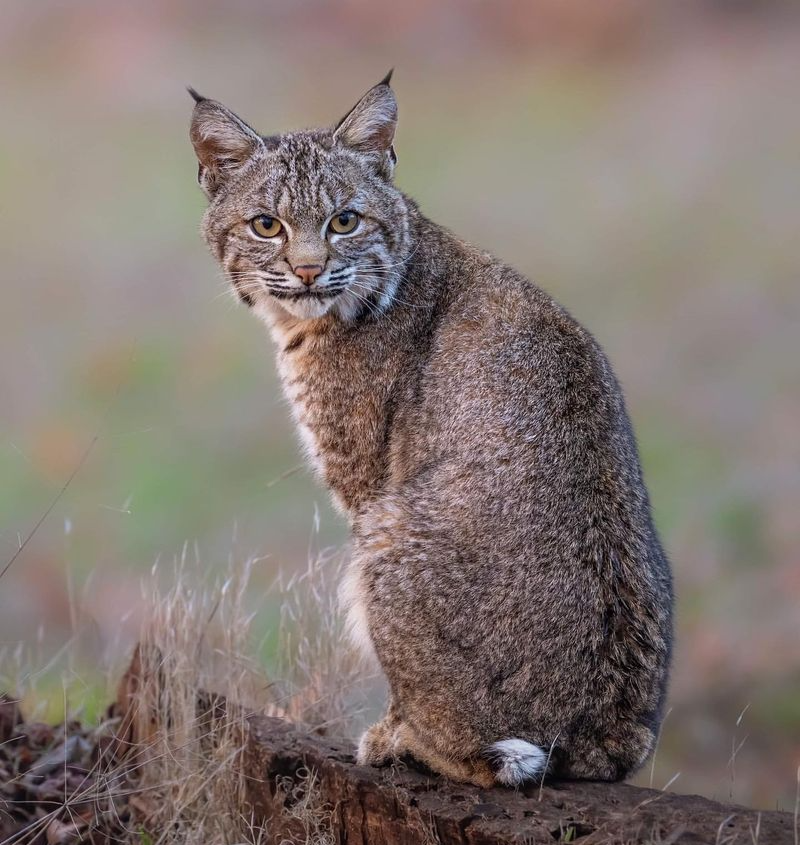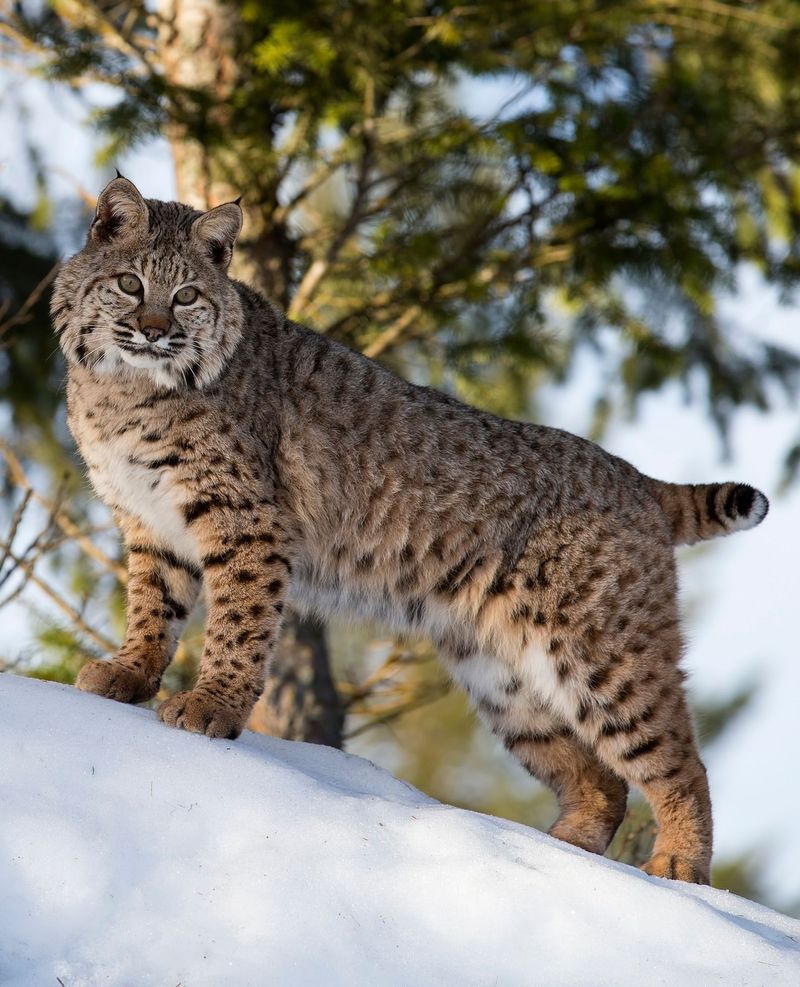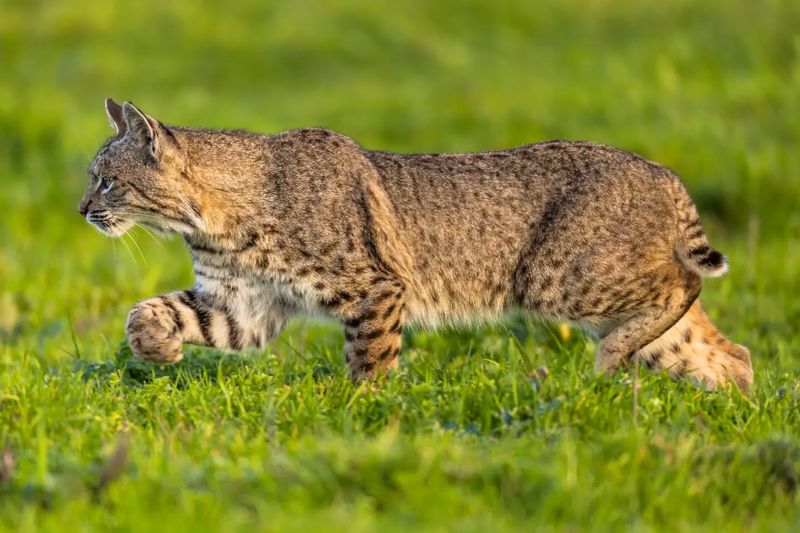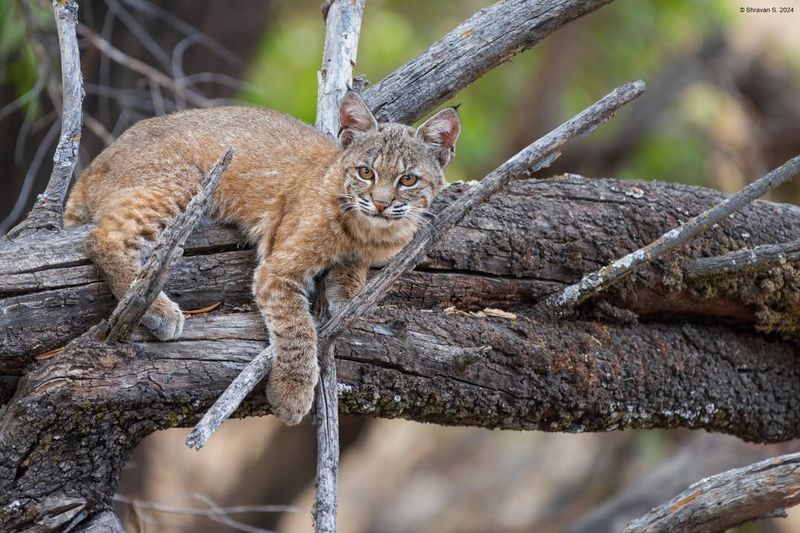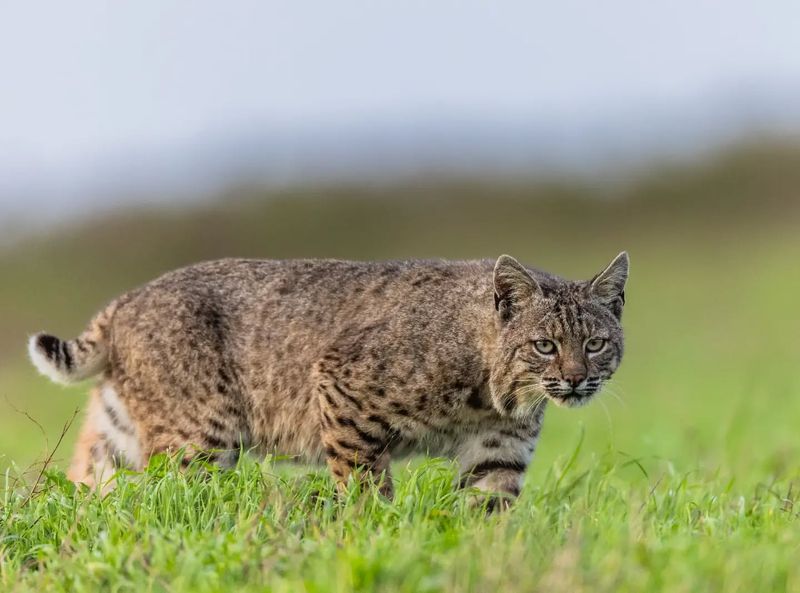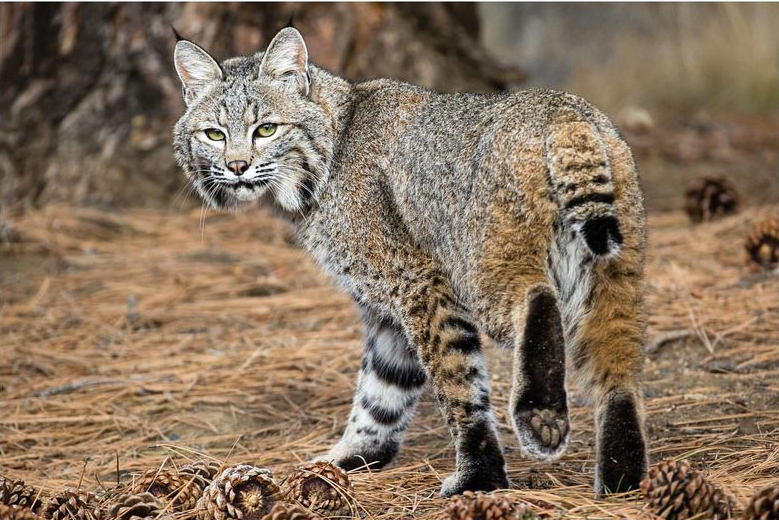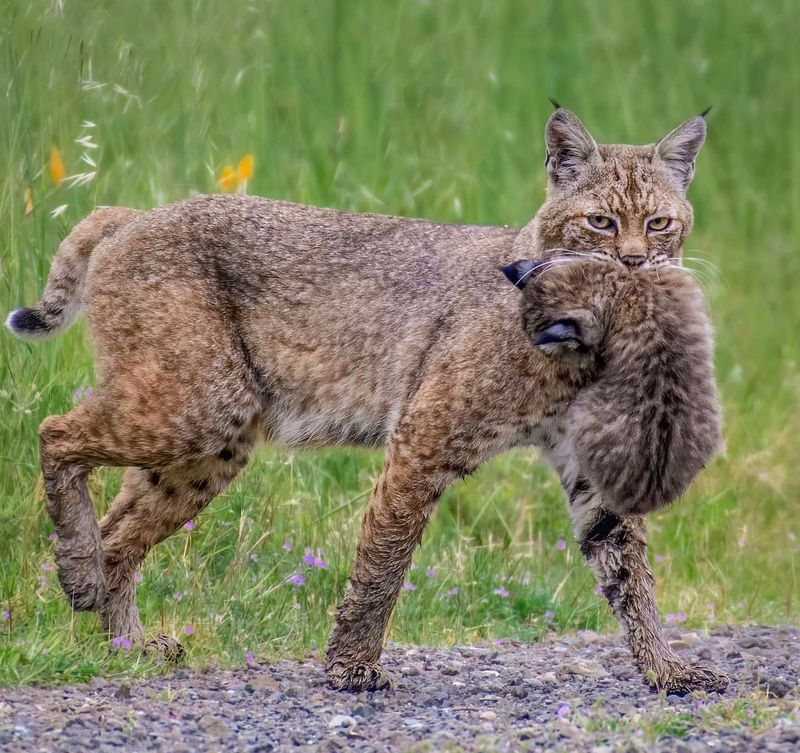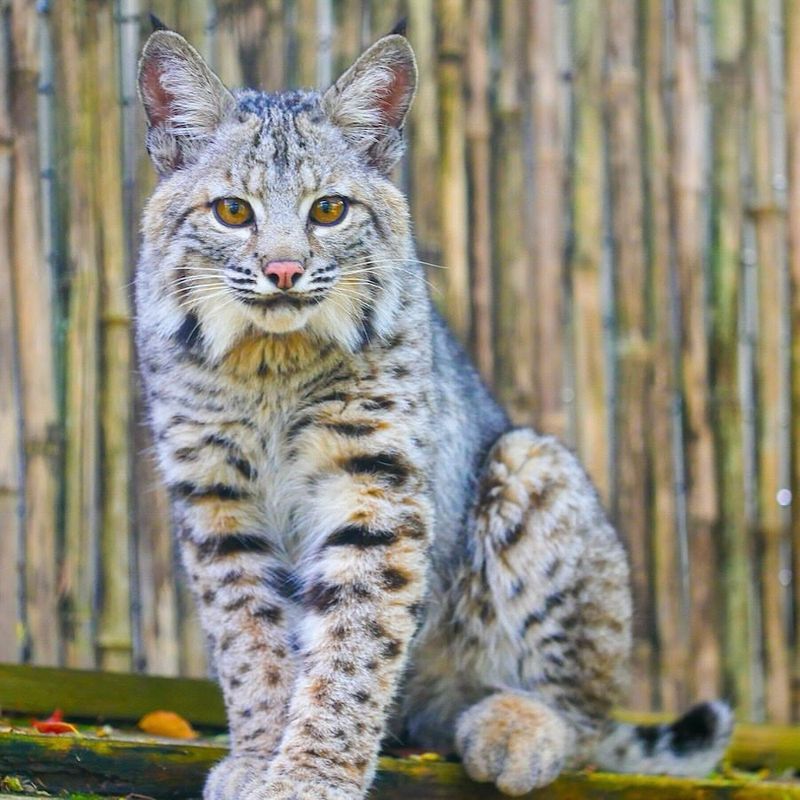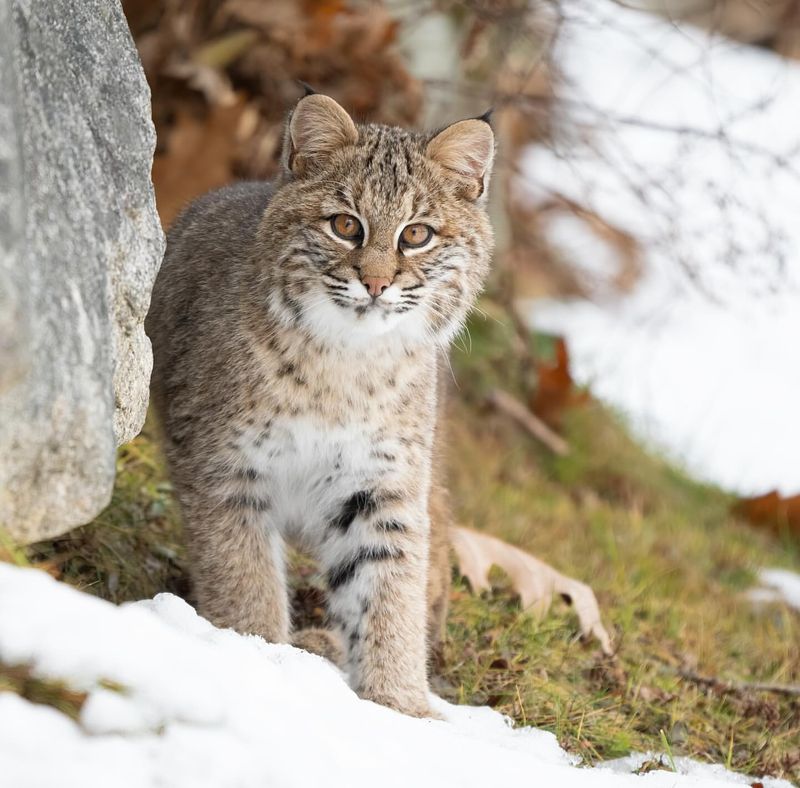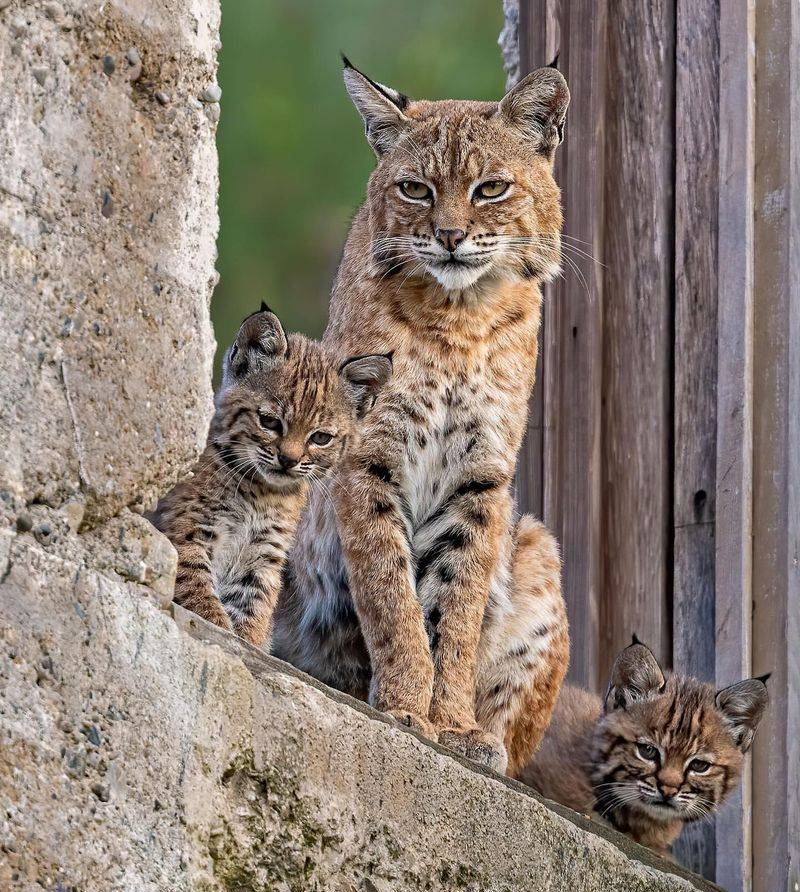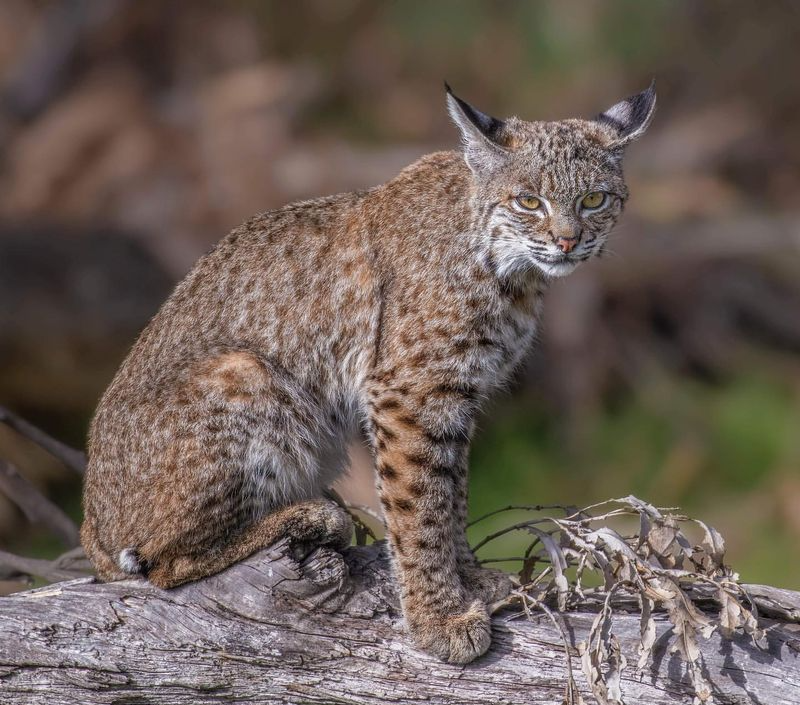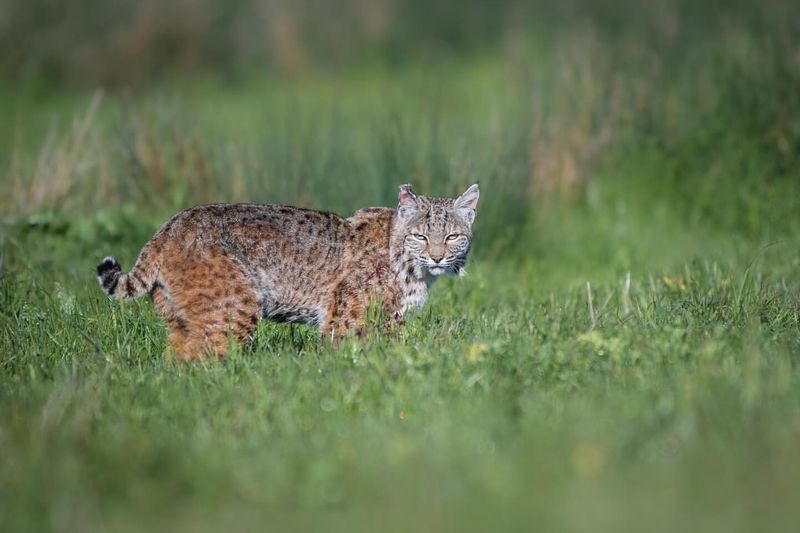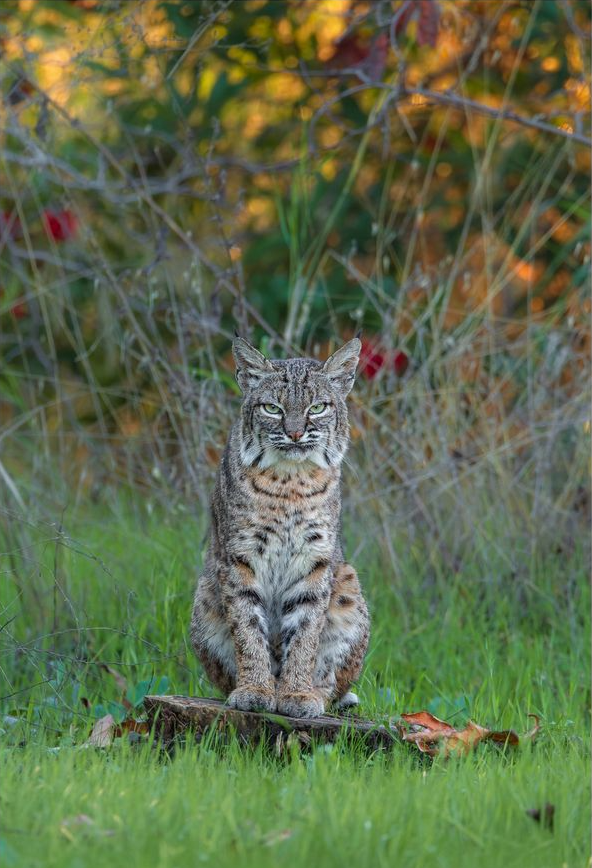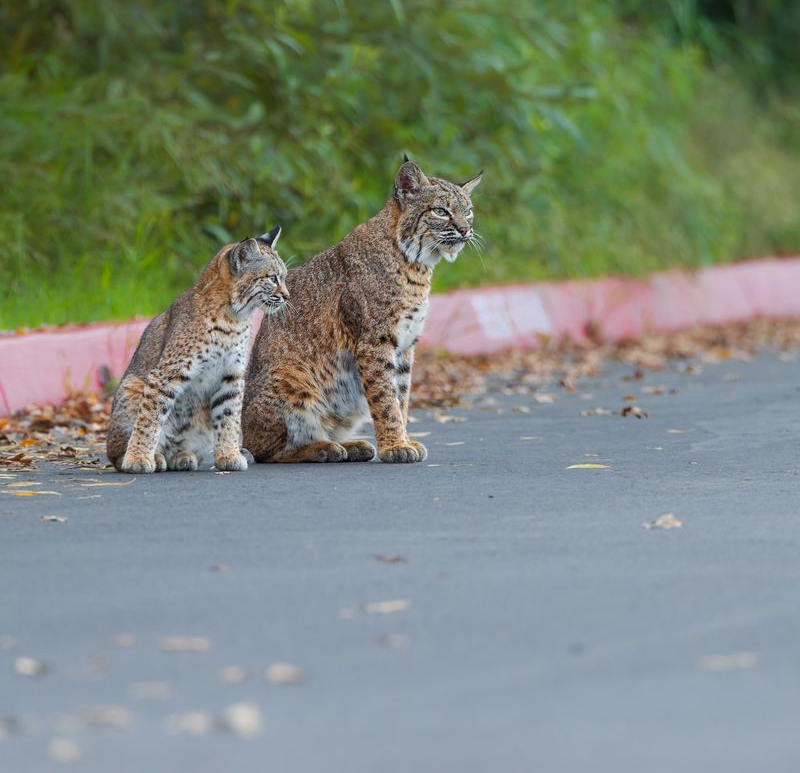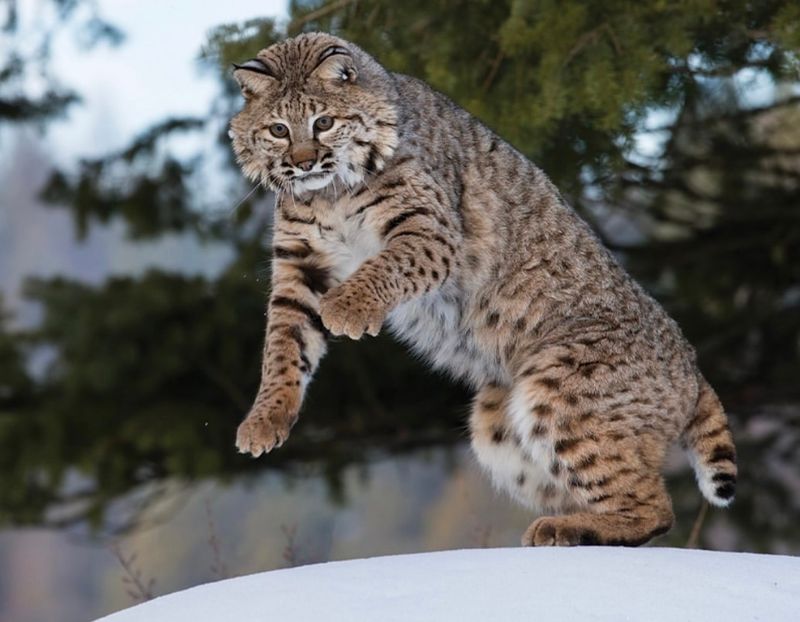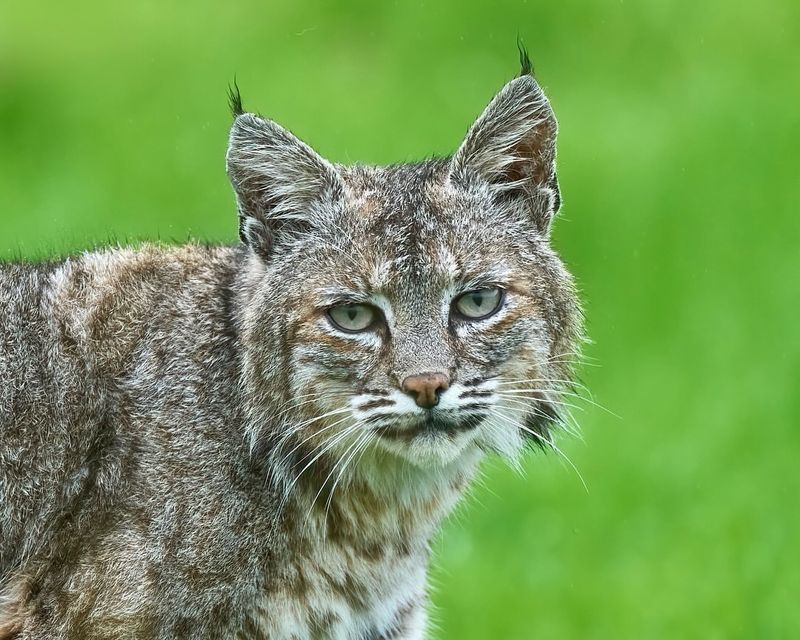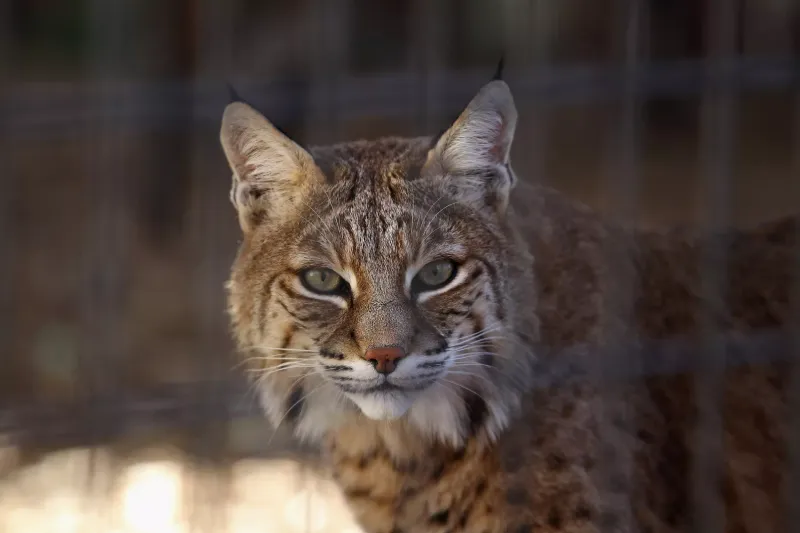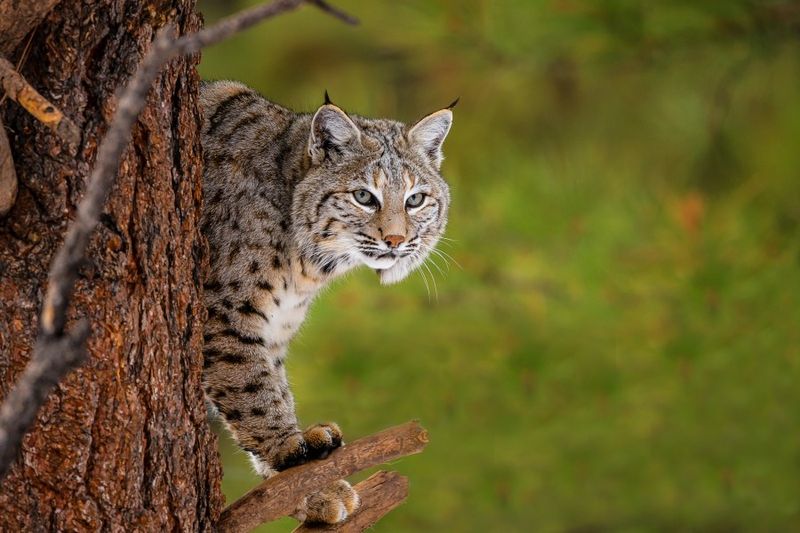📖 Table of Content:
If you’ve ever taken a quiet walk through the woods and had the eerie feeling that something was watching you, there’s a chance it was a bobcat.
These stealthy, medium-sized wild cats roam much of the United States, rarely making their presence known—unless you’re lucky (or unlucky) enough to spot one.
While they tend to avoid humans, bobcats are thriving in many states, sometimes even showing up in suburban neighborhoods, backyards, and hiking trails.
Unlike mountain lions, bobcats aren’t considered a major threat to people, but that doesn’t mean you shouldn’t take precautions. Whether you’re an outdoor enthusiast, a pet owner, or just someone curious about wildlife, knowing how to handle an encounter can make all the difference.
From the deserts of Arizona to the forests of Maine, here are 20 U.S. states where you’re most likely to run into a bobcat, along with practical tips to stay safe around these elusive predators.
1. Arizona
Arizona is prime bobcat territory, with its vast deserts, rugged mountains, and suburban areas providing the perfect mix of shelter and prey. These elusive cats are commonly spotted near washes, golf courses, and even backyards in cities like Phoenix and Tucson.
They’re highly adaptable and have no problem hunting rabbits, rodents, and even the occasional house pet if given the chance. While bobcats typically avoid people, it’s not uncommon to see them sunbathing on a rocky outcrop or sneaking through a neighborhood at dawn or dusk.
If you encounter one, remain calm, make yourself look bigger, and avoid running—this can trigger their instinct to chase. Secure pets indoors at night, and eliminate food sources like unsecured trash or outdoor pet food.
With Arizona’s thriving bobcat population, respect and caution go a long way in safely coexisting with these beautiful wild cats.
2. California
From the forests of Northern California to the dry chaparral of Southern California, bobcats are a common sight throughout the Golden State. Their population thrives in the Santa Monica Mountains, the Sierra Nevada foothills, and even near urban parks and hiking trails.
These medium-sized wild cats are skilled at staying out of sight, but hikers and homeowners alike occasionally spot them prowling through backyards or crossing roads at dusk.
While bobcats aren’t typically a threat to humans, they can prey on small pets, making it essential to keep cats and small dogs indoors at night.
If you see one, avoid approaching and give it plenty of space. To deter them from lingering near homes, remove attractants like pet food, bird feeders (which attract rodents), and open compost piles. Bobcats play a crucial role in maintaining ecological balance in California, so responsible coexistence is key.
3. Texas
Texas is home to a healthy population of bobcats, particularly in the Hill Country, East Texas pine forests, and even the outskirts of major cities like Dallas, Austin, and Houston.
These stealthy predators thrive in various habitats, from scrublands to suburban greenbelts, often hunting at night for rabbits, squirrels, and other small prey. While bobcats are not typically aggressive, they may wander into neighborhoods in search of food or water, especially during dry seasons.
If you encounter one, don’t panic—simply back away slowly while making yourself appear larger. Keep pets and livestock secured, and ensure outdoor garbage and pet food are kept indoors to minimize unwanted visits.
Texas’s bobcats are a vital part of the local ecosystem, controlling rodent populations and maintaining balance in their environment. Observing them from a distance is the best way to appreciate these elusive wild cats.
4. Colorado
In Colorado, bobcats thrive in the foothills, mountains, and even the suburban areas bordering the Front Range.
They’re particularly common in areas like Boulder, Fort Collins, and Colorado Springs, where natural habitat meets human development.
Bobcats are excellent climbers and hunters, preying on rabbits, birds, and small mammals. While they’re rarely a direct threat to humans, pet owners should be cautious—bobcats have been known to target outdoor cats and small dogs.
If you spot one, stand your ground, make noise, and avoid running away. Keeping yards free of rodent attractants and securing chicken coops or pet enclosures can help prevent unwanted encounters.
5. Oregon
Oregon’s dense forests, rolling farmlands, and rugged coastlines create an ideal habitat for bobcats. They are commonly found in the Cascade Range, the Willamette Valley, and even near urban centers like Portland and Eugene.
These nocturnal hunters are highly adaptable, often preying on rabbits, rodents, and birds. While bobcats are generally elusive, they may venture into suburban areas in search of food.
If you encounter one, maintain eye contact, make yourself appear larger, and slowly back away—never turn your back or run.
Keep pets indoors at night and secure garbage and compost bins to minimize interactions.
6. Florida
Florida’s bobcats thrive in swamps, forests, and suburban neighborhoods, making them one of the most adaptable predators in the state.
They’re commonly spotted in the Everglades, along the Gulf Coast, and even in residential areas near wooded regions.
Bobcats in Florida tend to be smaller than those found in northern states, but they are just as skilled at hunting rabbits, birds, and small mammals. While they typically avoid humans, they may come closer to homes if food sources are available.
To prevent unwanted encounters, avoid leaving pet food outdoors, secure garbage, and supervise small pets when outside. If a bobcat appears in your yard, stand tall, make noise, and allow it an escape route.
7. Georgia
Georgia’s forests, swamps, and rolling farmlands provide prime habitat for bobcats, making them a common sight throughout the state.
They’re particularly active in the Appalachian foothills, the Okefenokee Swamp, and even suburban areas near Atlanta and Savannah.
Bobcats are skilled hunters, primarily preying on rabbits, rodents, and birds. While they rarely pose a threat to humans, they may occasionally target small pets. If you see a bobcat, remain calm, back away slowly, and avoid direct confrontation.
To reduce the likelihood of encounters, secure outdoor trash, eliminate food sources like birdseed that attract prey animals, and keep pets indoors at night.
8. New Mexico
The desert landscapes and high plateaus of New Mexico provide an ideal setting for bobcats. These cats are well-suited to arid environments, where they navigate the rugged terrain with agility and grace.
Their spotted coats blend seamlessly into the rugged environment, making them difficult to spot unless they’re actively hunting. Bobcats in New Mexico primarily feed on rabbits, rodents, and birds, and they’re most active at dawn and dusk.
While they generally avoid human interaction, they may occasionally wander into yards in search of easy prey. If you encounter one, stand your ground, make noise, and avoid turning your back.
With their role in maintaining ecological balance, bobcats are a vital part of New Mexico’s wildlife, best admired from a respectful distance.
9. Nevada
Nevada’s harsh deserts and rugged mountain ranges provide ideal conditions for bobcats, which are well-adapted to the arid environment.
They are commonly found in areas like Red Rock Canyon, the Great Basin, and even near the outskirts of Las Vegas and Reno.
Bobcats in Nevada primarily hunt small mammals and birds, using their keen eyesight and stealth to stalk prey. While they avoid human interaction, they sometimes venture into suburban areas in search of water and food.
Secure pet enclosures and remove potential attractants like bird feeders and open compost bins to discourage visits. Spotting one in the wild is a rare but thrilling experience that highlights the beauty of the state’s diverse wildlife.
10. South Carolina
South Carolina’s dense woodlands, swamps, and coastal regions provide an excellent habitat for bobcats.
They are particularly common in the Lowcountry, the Blue Ridge Mountains, and even suburban areas where natural and urban landscapes meet.
Bobcats are most active at night, preying on rabbits, rodents, and birds. Though they usually avoid humans, they may occasionally be seen crossing roads or prowling near homes in search of food.
To minimize interactions, keep pets indoors at night and secure outdoor food sources. By respecting their space and taking simple precautions, residents can safely coexist with these fascinating predators.
11. Maine
Maine’s dense forests, rolling hills, and remote wilderness areas make it a prime habitat for bobcats. These elusive wild cats are particularly common in the western and northern parts of the state, though they can also be found near farmlands and rural communities.
Bobcats in Maine primarily hunt rabbits, squirrels, and birds, using their stealth and agility to catch prey. While they are not typically a threat to humans, small pets can be at risk.
f you see a bobcat, remain calm and avoid making sudden movements. To prevent unwanted visits, secure garbage, eliminate food sources, and keep pets indoors at night.
Though they are rarely seen due to their secretive nature, spotting one in the wild is a unique and exciting experience.
12. Michigan
Michigan’s dense forests, wetlands, and farmlands provide an ideal environment for bobcats, especially in the Upper Peninsula and the northern Lower Peninsula.
These stealthy felines are well-adapted to the state’s harsh winters, using their thick fur and powerful legs to navigate deep snow in search of prey like rabbits, squirrels, and birds.
Though bobcats tend to avoid humans, they may be spotted near wooded suburban areas, particularly at dawn or dusk.
If you encounter one, stay calm, make yourself appear larger, and avoid running away.
13. North Carolina
North Carolina’s diverse landscapes, from the Blue Ridge Mountains to the coastal plains, offer prime habitat for bobcats. They thrive in wooded areas, swamps, and even suburban greenbelts, making them common throughout the state.
These nocturnal hunters primarily prey on rabbits, rodents, and birds, using their keen senses and agility to catch their next meal.
While bobcats typically steer clear of humans, they may venture into residential areas in search of food. If you see one, avoid direct eye contact, stand tall, and back away slowly.
To deter them, secure outdoor trash, eliminate potential food sources, and keep small pets indoors at night.
14. Pennsylvania
Pennsylvania’s rolling hills, dense forests, and farmlands provide the perfect environment for bobcats. Most commonly found in the northern and central regions, these stealthy predators are gradually expanding their range into the southern parts of the state.
They are excellent hunters, primarily preying on rabbits, squirrels, and small game.
Though bobcats are rarely seen due to their secretive nature, they may occasionally cross roads or wander near suburban areas. If you encounter one, maintain a safe distance, make noise, and allow it to retreat.
Seeing one in the wild is a rare but exciting experience that highlights the state’s rich biodiversity.
15. Virginia
Virginia’s mix of dense forests, mountains, and coastal wetlands makes it a prime habitat for bobcats.
They are commonly found in the Appalachian Mountains, Shenandoah Valley, and even wooded suburban areas throughout the state. As skilled hunters, they primarily feed on rabbits, rodents, and birds.
Though bobcats are elusive, they may occasionally be spotted at dusk or dawn, especially in rural areas. If you see one, remain calm, make yourself look larger, and avoid sudden movements.
Bobcats in Virginia play a key role in maintaining a balanced ecosystem, and with the right precautions, humans and these wild felines can coexist peacefully.
16. Wisconsin
The vast forests, farmlands, and wetlands of Wisconsin create an ideal environment for bobcats, especially in the northern part of the state.
These adaptable felines are well-suited to Wisconsin’s cold winters, often hunting in deep snow for rabbits, rodents, and other small prey.
While bobcats are naturally elusive, their populations have been steadily increasing, leading to more sightings in rural and suburban areas.
If you happen to run into one, make sure to maintain eye contact, stand your ground, and allow the bobcat an escape route.
17. Minnesota
Minnesota’s forests, prairies, and wetlands provide an excellent habitat for bobcats, particularly in the northern part of the state.
These wild cats are built for the harsh winters, with thick fur and strong legs that allow them to move easily through snow.
Bobcats in Minnesota primarily hunt rabbits, squirrels, and birds, making them an important part of the local ecosystem.
While they are naturally reclusive, they may occasionally be spotted near roads, farmlands, or suburban areas bordering forests.
18. Massachusetts
Bobcats are the only wild feline species found in Massachusetts, thriving in the state’s forests, hills, and suburban green spaces.
Most commonly spotted in the western and central regions, they are also making their way toward the eastern part of the state, including the outskirts of Boston.
These solitary hunters primarily prey on rabbits, rodents, and birds, playing a key role in controlling small animal populations.
Bobcats are shy and tend to avoid humans, but they may be spotted in backyards or crossing roads, especially in the early morning or late evening. If you encounter one, remain calm, stand tall, and make noise to encourage it to leave.
19. Illinois
Southern Illinois serves as prime bobcat territory with populations booming in recent decades. These adaptable felines thrive in the Shawnee National Forest and surrounding farmlands where their numbers have increased nearly 400% since the 1990s.
When hiking Illinois trails, carry a walking stick and make noise to avoid surprising these normally secretive cats.
Most bobcats will vanish before you spot them. If you encounter one, maintain eye contact, appear larger by raising your arms, and back away slowly without turning your back.
Bobcat hunting seasons in Illinois indicate their healthy population. Farmers sometimes spot them at field edges during dawn and dusk when these stealthy hunters are most active.
20. Indiana
Bobcat sightings across southern Indiana have skyrocketed as these resilient predators reclaim their historical range.
Wildlife officials confirm steady population growth, especially in the hill country near Brown County State Park and the Hoosier National Forest.
Hikers should secure food in sealed containers since the smell might attract curious cats. Never approach bobcat kittens if spotted – a protective mother is certainly nearby. Carrying bear spray offers peace of mind for nervous hikers, though attacks on humans remain extremely rare.
Rural homeowners in southern counties sometimes glimpse these tawny, spotted cats near barns or chicken coops. Their return signals a healthier ecosystem throughout Indiana’s woodlands.
